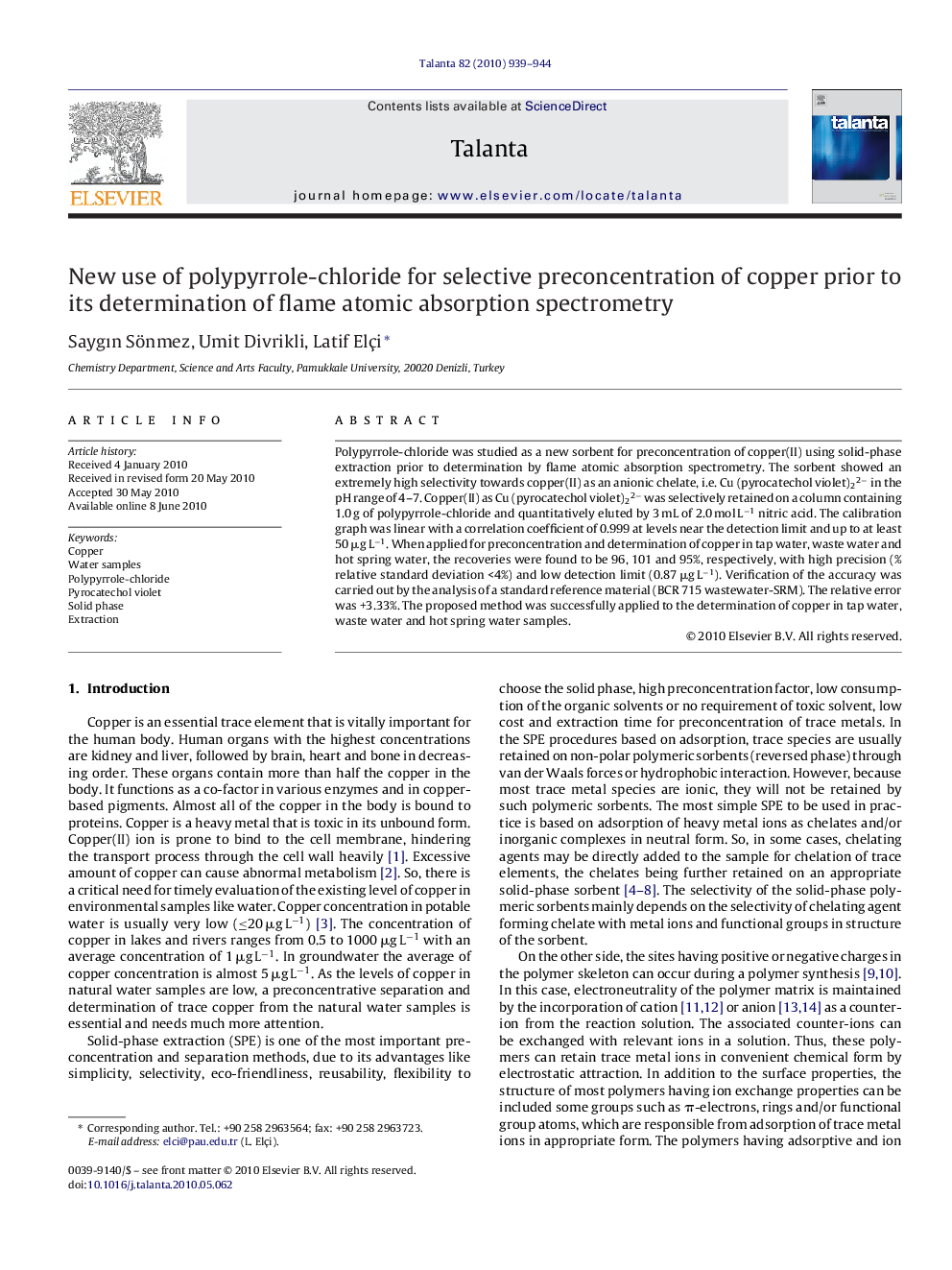| Article ID | Journal | Published Year | Pages | File Type |
|---|---|---|---|---|
| 1244592 | Talanta | 2010 | 6 Pages |
Polypyrrole-chloride was studied as a new sorbent for preconcentration of copper(II) using solid-phase extraction prior to determination by flame atomic absorption spectrometry. The sorbent showed an extremely high selectivity towards copper(II) as an anionic chelate, i.e. Cu (pyrocatechol violet)22− in the pH range of 4–7. Copper(II) as Cu (pyrocatechol violet)22− was selectively retained on a column containing 1.0 g of polypyrrole-chloride and quantitatively eluted by 3 mL of 2.0 mol L−1 nitric acid. The calibration graph was linear with a correlation coefficient of 0.999 at levels near the detection limit and up to at least 50 μg L−1. When applied for preconcentration and determination of copper in tap water, waste water and hot spring water, the recoveries were found to be 96, 101 and 95%, respectively, with high precision (% relative standard deviation <4%) and low detection limit (0.87 μg L−1). Verification of the accuracy was carried out by the analysis of a standard reference material (BCR 715 wastewater-SRM). The relative error was +3.33%. The proposed method was successfully applied to the determination of copper in tap water, waste water and hot spring water samples.
